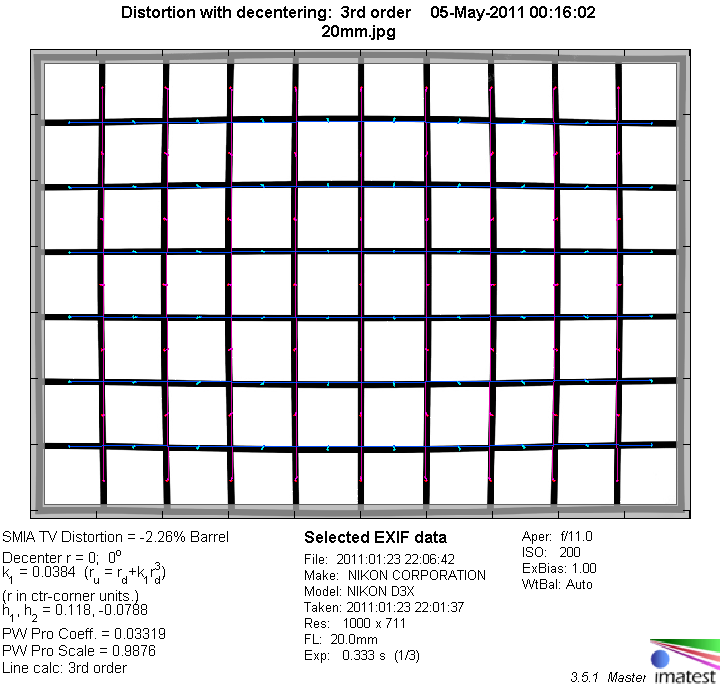|
Nikkor AF 20mm f/2.8 D (FX) - Review / Test Report - Analysis |
|
Lens Reviews -
Nikon / Nikkor (full format)
|
|
Page 2 of 3

Distortion
Typical for most wide angle lenses the lens produces visible barrel distortion with a little mustache sub-style.

The chart above has a real-world size of about 120x80cm.
Vignetting
The Nikkor shows very pronounced light falloff towards the image corners, wide open and at f/4. Even stopped down to f/5.6 the lens still shows vignetting of almost 1 EV. From f/8 onwards, the amount of corner darkening is probably not an issue anymore for most subjects, but it still remains on a rather high level for such aperture values. In summary, this is quite poor performance in this regard, but most likely a tribute to the lens' quite compact design.
We're performing our vignetting analysis based on
(uncorrected) JPEGs straight from the camera. The JPG engine of the Nikon D3x features a rather flat
gradation curve, thus has a moderate contrast characteristic, resulting in comparatively low vignetting figures - the
corresponding Canon figures are roughly 40% higher due to the more
aggressive default contrast setting.

MTF (resolution)
In the image center the lens shows very good resolution wide open already, reaching excellent sharpness from f/4 onwards (until diffraction limits the maximum achievable resolution at f/11 and beyond).
The image borders and corners are about one school mark behinde. Wide open, the sharpness is good, stopped down to f/5.6 and beyond both borders and corners show very good resolution.
Please note that the MTF results are not directly comparable across the different systems!
Below is a simplified summary of the formal findings. The chart shows line widths
per picture height (LW/PH) which can be taken as a measure for sharpness.
If you want to know more about the MTF50 figures you may check out the corresponding
Imatest Explanations

Chromatic Aberrations (CAs)
Chromatic aberrations (color shadows at harsh contrast transitions) are quite pronounced and in the range of roughly 1.9 to 2.4 pixels throughout the tested apertures. However, CAs can easily be corrected in software or by the camera itself (if you shoot JPEGs and own a current Nikon DSLR).

|